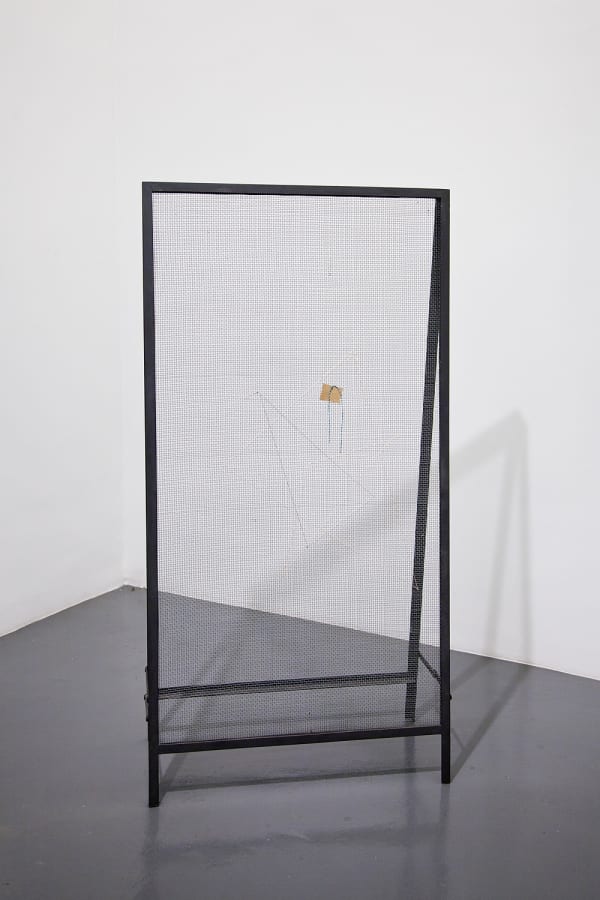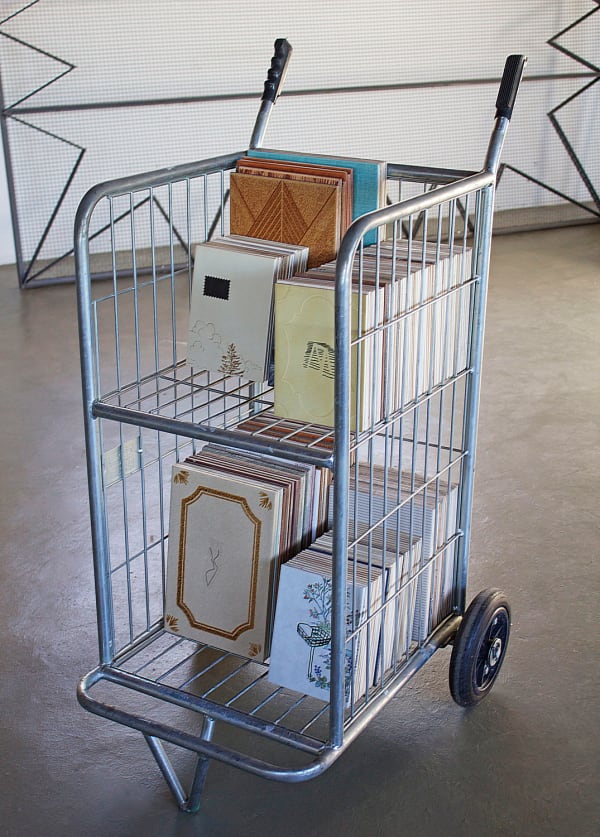Débora Bolsoni: General Urbanism
The inspiration underlying the works of Débora Bolsoni mostly comes from probing exhibiting strategies. The devices developed by Bolsoni, be them shelves, trolleys or panels, meanwhile serving as supports for displaying a given piece of work, wind up incorporated into the work itself. It is also strikingly surprising that the artist’s reasoning is akin to that of curators. The attention of both of them is geared towards the exhibition design and everything in-between, like the environment and furniture, which is resorted to when staging a show. Needless to say, the manner how a work is exposed is quite so important as the object per se. To Bolsoni, there is no distinction between “what” and “how” a work is delivered to the audience.
Her pieces substantiate the dual aspect of being open for the onlooker’s regard to solve them, but also camouflaged, as if they behaved like devices for exhibiting other pieces. The objects that would be on a shelf end up as the framework supporting it, like a bookcase made of books. But the artist’s books are glazed tiles, in a mishmash with the wall.
Bolsoni’s works abide by an extended ripening time. They remain at the atelier, idle, being viewed and reviewed by the artist over years. Besides this, some materials are dislocated from time itself. Not by chance, the ceramic-coated books are dug in glazed tile dumps that have remainders, unaligned-pattern boards, the civil industry rejects and pieces out of the average taste of consumers.
Not only do these materials endure poetic-wise, some forms are exhibited and reappear in a new configuration after a while, both recapturing the initial sense, and opening it up. This is the case of Splash, which has already been displayed as a rosy-paper calendar and, after some time, became a grid, a sort of door, a city’s fragment mediating the public and private realms. The fencing pattern is sort of household, though it sticks to its segregation role. Grids and spears are recurring signs in the Bolsoni’s path. They have already been standalones, but now reappear on the shelves. The grids stand as a plea for safety, pointing to the seclusion of social life, but also deliver subtle patterns and drawings.
Juxtaposed in a metal mesh, the splash format, inspired by ads, is a hollow element, a platform for an offering, or a warning that is usually there. The shape is designed to draw attention in shop sales. Typically, goods and ciphers are there to fill this vacuum encompassed by a hectic zigzag line. In the universe of cartoons, they would be speech bubbles contoured by pointy triangles, conveying the idea of explosion, or a scream. Over and above, as a quite significant theme for the artist, they are like signs of consumption, an emblem of how we respond to merchandise.
The core piece of the exhibit makes an allusion to a symbolic figure, like the badges or insignia used to represent companies or institutions. Differently, here they are manhole covers, similar to those found on city roads, with a fabric that partially covers them, allowing only a vertical stripe to be visible. Nonetheless, this sort of coat of arts has no writing or translatable element on it. The association with the field of heraldry is conspicuous. There is a certain enigma and opacity to the work, and an opening of senses as well.
A fragment of the city, not assigned its original role, is aimed at bestowing the gallery with an urban sign. Furthermore, this piece also shows a fabric with delicate details, edges and folds that yield triangular shapes, ultimately creating a four-square figure. In spite of the contrast between the fabric, the most intimate and private element, and the roughness of the metal cover, the work is indivisibly shaped.
Recurring figures in the Bolsoni’s path turn into patterns engraved on the ceramic boards. Boards which needed to be settled in the oven. With this, the artist’s drawings establish a liaison with the original glazed tiles patterns. For instance, Splash turns into a sort of stamp. This set of ceramic coats is displayed in a stock trolley, like in a fair of patterns, a showroom of construction materials. The elements not used in an architectural design, but which are used as interior design and basic elements of houlseholds, are the artist’s core motif; namely, the items which customers pick from a display case, like fabrics, patterns, furniture or glazed tiles.
This exhibit, the first solo show that Debora Bolsoni has in Rio de Janeiro, serves the purpose of introducing her vocabulary and repertoire of shapes. An introduction to indeterminate articles that conjoin forms of presentation and the signs of consumption existing in the civil construction industry.
Cauê Alves










